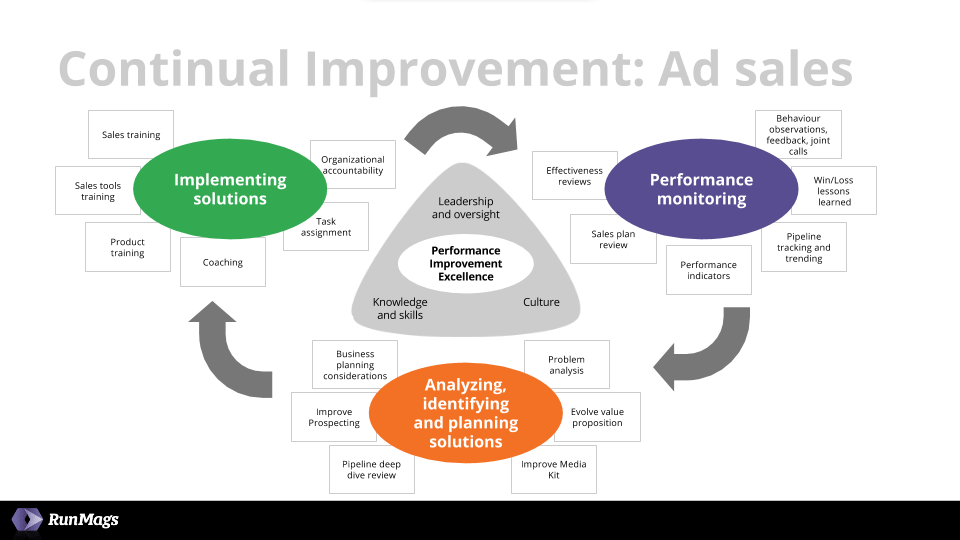
Advertising sales team continual improvement
Don’t limit performance improvement to under-performing sales reps. There’s much to gain from basing your sales team cadence on an overarching continual improvement program, acknowledging that everybody can improve their performance and that it’s an ongoing process.




